 Newly constructed urban residential landscape soils sampled within Central Florida are dominated by large sand particles and possess low soil moisture retention. Therefore, irrigation and fertilizer applications should be managed to match site conditions and prevent overapplication of water and nutrient leaching. Sampled soils in newly developed urban residential communities were found to be highly compacted and likely to inhibit plant establishment and growth. This 3-page fact sheet was written by Brian J. Pearson, and published by the UF Department of Environmental Horticulture, July 2013.
Newly constructed urban residential landscape soils sampled within Central Florida are dominated by large sand particles and possess low soil moisture retention. Therefore, irrigation and fertilizer applications should be managed to match site conditions and prevent overapplication of water and nutrient leaching. Sampled soils in newly developed urban residential communities were found to be highly compacted and likely to inhibit plant establishment and growth. This 3-page fact sheet was written by Brian J. Pearson, and published by the UF Department of Environmental Horticulture, July 2013.
http://edis.ifas.ufl.edu/ep479
Author: dihagan
How to Hire and Manage Residential Contractors
 If you are looking for a contractor for either home building or remodeling, ask difficult questions before you enter into a contract. This way you and the contractor have a clear understanding of the other’s expectations. Before signing a contract and beginning a project is the best time to thank contractors for their consideration and time, rather than risk entering into an unfortunate working relationship that could require legal intervention. Contractors understand potential clients, and they will inform you if they do not want to accept a contract with you. This negotiation period should not be taken personally by either party and should only develop into a business relationship that exists during the period of hire and warranty outlined in the contract. This 5-page fact sheet was written by Randall A. Cantrell, and published by the UF Department of Family Youth and Community Sciences, September 2013.
If you are looking for a contractor for either home building or remodeling, ask difficult questions before you enter into a contract. This way you and the contractor have a clear understanding of the other’s expectations. Before signing a contract and beginning a project is the best time to thank contractors for their consideration and time, rather than risk entering into an unfortunate working relationship that could require legal intervention. Contractors understand potential clients, and they will inform you if they do not want to accept a contract with you. This negotiation period should not be taken personally by either party and should only develop into a business relationship that exists during the period of hire and warranty outlined in the contract. This 5-page fact sheet was written by Randall A. Cantrell, and published by the UF Department of Family Youth and Community Sciences, September 2013.
http://edis.ifas.ufl.edu/fy1380
Florida Crop/Pest Management Profile: Watermelon
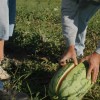 Florida is the only U.S. supplier of watermelons from December to April. Florida watermelons are harvested throughout the year, although the vast majority of production is harvested from May to July. This 26-page fact sheet profiles Florida watermelon crop production and pest management practices. Written by Wael M. Elwakil and Mark A. Mossler, and published by the UF Department of Agronomy, August 2013.
Florida is the only U.S. supplier of watermelons from December to April. Florida watermelons are harvested throughout the year, although the vast majority of production is harvested from May to July. This 26-page fact sheet profiles Florida watermelon crop production and pest management practices. Written by Wael M. Elwakil and Mark A. Mossler, and published by the UF Department of Agronomy, August 2013.
http://edis.ifas.ufl.edu/pi031
Nitrogen Cycling and Management for Romaine and Crisphead Lettuce Grown on Organic Soils
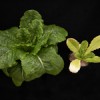 Lettuce reaches harvest in 60–70 days in South Florida. This short growing season leads to high demands for nitrogen fertilization to maintain adequate plant-available N concentrations in the soil. Growers need to supply the required amounts of N to obtain high yields. Lettuce growers also need to know the nutritional status of the crop through soil and plant tissue testing. This 4-page fact sheet was written by Luis Santos, Alan L. Wright, Yigang Luo, Huangjun Lu, and D. Calvin Odero, and published by the UF Department of Soil and Water Science, September 2013.
Lettuce reaches harvest in 60–70 days in South Florida. This short growing season leads to high demands for nitrogen fertilization to maintain adequate plant-available N concentrations in the soil. Growers need to supply the required amounts of N to obtain high yields. Lettuce growers also need to know the nutritional status of the crop through soil and plant tissue testing. This 4-page fact sheet was written by Luis Santos, Alan L. Wright, Yigang Luo, Huangjun Lu, and D. Calvin Odero, and published by the UF Department of Soil and Water Science, September 2013.
http://edis.ifas.ufl.edu/ss588
Rainbow scarab Phaneaus vindex Macleay (Insecta: Coleoptera: Scarabaeidae)
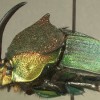 Rainbow scarabs are members of the beetle family Scarabaeidae, which along with the family Geotrupidae, are commonly known as dung beetles. Scarab beetles were the objects of worship in Ancient Egypt and the more spectacular varieties are made into jewelry. The genus Phanaeus MacLeay is distributed primarily in Neotropical habitats with 100 species, but also in the Neartic region with nine species and the West Indies with one. Dung beetles serve an important role in pasture ecosystems, which has resulted in their introduction around the world. The rainbow scarab has a bright exterior of metallic green, blue, and red interspersed with golden reflections. This 5-page fact sheet was written by Thomson Paris, Barukh Rohde, and Philip E. Kaufman, and published by the UF Department of Entomology and Nematology, July 2013.
Rainbow scarabs are members of the beetle family Scarabaeidae, which along with the family Geotrupidae, are commonly known as dung beetles. Scarab beetles were the objects of worship in Ancient Egypt and the more spectacular varieties are made into jewelry. The genus Phanaeus MacLeay is distributed primarily in Neotropical habitats with 100 species, but also in the Neartic region with nine species and the West Indies with one. Dung beetles serve an important role in pasture ecosystems, which has resulted in their introduction around the world. The rainbow scarab has a bright exterior of metallic green, blue, and red interspersed with golden reflections. This 5-page fact sheet was written by Thomson Paris, Barukh Rohde, and Philip E. Kaufman, and published by the UF Department of Entomology and Nematology, July 2013.
http://edis.ifas.ufl.edu/in1003
Silicon Effects on Resistance of St. Augustinegrass to Southern Chinch Bugs and Plant Disease
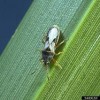 Silicon (Si) is the second most common element on earth, but it is not considered an essential element for plant growth. However, a growing body of evidence has shown that Si can enhance plant resistance to insect pests. This 5-page fact sheet reports the results of a study to determine if silicon applications to St. Augustinegrass varieties increase the silicon in the plants and how this increased silicon affects development and survival of southern chinch bugs as well as development of plant diseases. Written by Alan L. Wright, Ron Cherry, Huangjun Lu, and Pamela Roberts, and published by the UF Department of Soil and Water Science, September 2013.
Silicon (Si) is the second most common element on earth, but it is not considered an essential element for plant growth. However, a growing body of evidence has shown that Si can enhance plant resistance to insect pests. This 5-page fact sheet reports the results of a study to determine if silicon applications to St. Augustinegrass varieties increase the silicon in the plants and how this increased silicon affects development and survival of southern chinch bugs as well as development of plant diseases. Written by Alan L. Wright, Ron Cherry, Huangjun Lu, and Pamela Roberts, and published by the UF Department of Soil and Water Science, September 2013.
http://edis.ifas.ufl.edu/ss589
An Introduction to Biochars and Their Uses in Agriculture
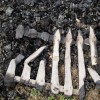 Biochar, also known as black carbon, is a product derived from organic materials rich in carbon and is found in soils in very stable solid forms, often as deposits. In recent years, considerable research has focused on biochar, its nature, and its properties to explore its potential benefits and negative impacts, particularly for applying to agricultural fields as amendments. This publication provides a general description of biochar, as well as technical details, benefits, and disadvantages of biochar for agricultural and environmental uses. This 4-page fact sheet was written by Rao Mylavarapu, Vimala Nair, and Kelly Morgan, and published by the UF Department of Soil and Water Science, August 2013.
Biochar, also known as black carbon, is a product derived from organic materials rich in carbon and is found in soils in very stable solid forms, often as deposits. In recent years, considerable research has focused on biochar, its nature, and its properties to explore its potential benefits and negative impacts, particularly for applying to agricultural fields as amendments. This publication provides a general description of biochar, as well as technical details, benefits, and disadvantages of biochar for agricultural and environmental uses. This 4-page fact sheet was written by Rao Mylavarapu, Vimala Nair, and Kelly Morgan, and published by the UF Department of Soil and Water Science, August 2013.
http://edis.ifas.ufl.edu/ss585
Florida Subtropical Peaches: Production Practices
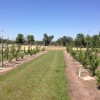 Subtropical peach production includes many practices, such as site selection, orchard design, and disease, weed, and insect management through to harvest. Florida’s subtropical climate allows growers to harvest their crops early, but it creates challenges for the long postharvest growing season. This 14-page fact sheet covers the breadth of topics related to subtropical peach production, including a monthly timeline of recommended practices. Written by M. Olmstead, J. Chaparro, J. G. Williamson, R. Rouse, R. Mizell, P. Harmon, and J. Ferguson, and published by the UF Department of Horticultural Sciences, August 2013.
Subtropical peach production includes many practices, such as site selection, orchard design, and disease, weed, and insect management through to harvest. Florida’s subtropical climate allows growers to harvest their crops early, but it creates challenges for the long postharvest growing season. This 14-page fact sheet covers the breadth of topics related to subtropical peach production, including a monthly timeline of recommended practices. Written by M. Olmstead, J. Chaparro, J. G. Williamson, R. Rouse, R. Mizell, P. Harmon, and J. Ferguson, and published by the UF Department of Horticultural Sciences, August 2013.
http://edis.ifas.ufl.edu/hs348
Thinning Southern Pines – A Key to Greater Returns
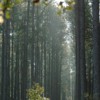 Thinning is an important silvicultural practice that redistributes the growth potential of the site to the best trees. Diameter growth rates are maintained or increased on residual trees after thinning, which increases the return on investment from higher-value trees. Biologically, thinning accelerates stand development by favoring the tallest, best-formed trees over those that are diseased, overtopped, crooked, forked, or otherwise undesirable and likely to die on their own if left in the stand long enough. In addition, thinning provides periodic income, improves access for equipment, recreation and hunting, and creates a generally healthier stand. Thinning is also beneficial for wildlife, especially when combined with prescribed fire or herbicide use to control competing vegetation. By allowing more light to reach the forest floor, thinning promotes growth of plants important as food and/or cover for wildlife species. Landowners are encouraged to consult with or hire a professional forester to assist with thinning and other forest management activities. This 6-page fact sheet was written by Chris Demers, Michael Andreu, Babe McGowan, Alan Long, and Jarek Nowak, and published by the UF Department of School of Forest Resources and Conservation, June 2013.
Thinning is an important silvicultural practice that redistributes the growth potential of the site to the best trees. Diameter growth rates are maintained or increased on residual trees after thinning, which increases the return on investment from higher-value trees. Biologically, thinning accelerates stand development by favoring the tallest, best-formed trees over those that are diseased, overtopped, crooked, forked, or otherwise undesirable and likely to die on their own if left in the stand long enough. In addition, thinning provides periodic income, improves access for equipment, recreation and hunting, and creates a generally healthier stand. Thinning is also beneficial for wildlife, especially when combined with prescribed fire or herbicide use to control competing vegetation. By allowing more light to reach the forest floor, thinning promotes growth of plants important as food and/or cover for wildlife species. Landowners are encouraged to consult with or hire a professional forester to assist with thinning and other forest management activities. This 6-page fact sheet was written by Chris Demers, Michael Andreu, Babe McGowan, Alan Long, and Jarek Nowak, and published by the UF Department of School of Forest Resources and Conservation, June 2013.
http://edis.ifas.ufl.edu/fr159
Armillaria Root Rot (Also known as Mushroom Root Rot, Shoestring Root Rot, Honey Mushroom Rot)
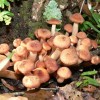 Armillaria root rot is a disease that decays the root system of many common trees and shrubs. It is caused by several species of Armillaria, fungi that can be recognized by the clusters of yellow to honey-colored mushrooms that emerge during moist conditions. The disease is often lethal, and infected trees may have wilting branches, branch dieback, and stunted growth. Infected trees and shrubs should be removed and replaced with resistant species. This 4-page fact sheet was written by Laura Sanagorski, Aaron Trulock, and Jason Smith, and published by the UF Department of Environmental Horticulture, July 2013.
Armillaria root rot is a disease that decays the root system of many common trees and shrubs. It is caused by several species of Armillaria, fungi that can be recognized by the clusters of yellow to honey-colored mushrooms that emerge during moist conditions. The disease is often lethal, and infected trees may have wilting branches, branch dieback, and stunted growth. Infected trees and shrubs should be removed and replaced with resistant species. This 4-page fact sheet was written by Laura Sanagorski, Aaron Trulock, and Jason Smith, and published by the UF Department of Environmental Horticulture, July 2013.
http://edis.ifas.ufl.edu/ep478
Learn more about Citrus Greening (Huanglongbing)
In recent news, UF has begun removing 150 trees found to be infected with the Huanglongbing virus on the Gainesville campus. For more information on this disease and the Asian Citrus psyllid that is its vector, check out these sites:
Solutions for Your Life: Citrus Greening (HLB)http://solutionsforyourlife.ufl.edu/hot_topics/agriculture/citrus_greening.html
UF/IFAS Extension Citrus Greening website
http://www.crec.ifas.ufl.edu/extension/greening/index.shtml
Citrus Greening (Huanglongbing) on EDIS
http://edis.ifas.ufl.edu/topic_citrus_greening
Natural Enemies of Rugose Spiraling Whitefly, Aleurodicus rugioperculatus Martin (Insecta: Hemiptera: Aleyrodidae) in the South Florida Landscape
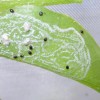 Rugose spiraling whitefly was first observed in south Florida in 2009. It has been found in 17 counties in south and central Florida. This whitefly has been reported on more than 60 plant species, which include gumbo limbo, coconut, black olive, avocado, Calophyllum spp., and giant white bird of paradise. This 6-page fact sheet describes the predators and parasitoids found feeding on this whitefly in the south Florida landscape. Written by Siavash Taravati, Catharine Mannion and Holly Glenn, and published by the UF Department of Entomology and Nematology, August 2013.
Rugose spiraling whitefly was first observed in south Florida in 2009. It has been found in 17 counties in south and central Florida. This whitefly has been reported on more than 60 plant species, which include gumbo limbo, coconut, black olive, avocado, Calophyllum spp., and giant white bird of paradise. This 6-page fact sheet describes the predators and parasitoids found feeding on this whitefly in the south Florida landscape. Written by Siavash Taravati, Catharine Mannion and Holly Glenn, and published by the UF Department of Entomology and Nematology, August 2013.
http://edis.ifas.ufl.edu/in1004
Speaking with Policymakers About Current Issues
 The future of the agricultural and natural resource industry requires that educators, industry professionals, and policymakers work together when addressing contentious issues. However, discussing contentious issues with policymakers at the local, state, and national level is not always an easy task. Policymakers in general are busy people with many issues competing for their limited time. Once in the door, it is important to deliver strong messages in the right way for the policymaker to listen and use your information when making important decisions. This 2-page fact sheet discusses the differences between education and persuasion and when to use each, offers information on how to make presentations that will get their attention, and identifies things to avoid when visiting with a policymaker. Written by Alexa J. Lamm, and published by the UF Department of Agricultural Education and Communication, August 2013.
The future of the agricultural and natural resource industry requires that educators, industry professionals, and policymakers work together when addressing contentious issues. However, discussing contentious issues with policymakers at the local, state, and national level is not always an easy task. Policymakers in general are busy people with many issues competing for their limited time. Once in the door, it is important to deliver strong messages in the right way for the policymaker to listen and use your information when making important decisions. This 2-page fact sheet discusses the differences between education and persuasion and when to use each, offers information on how to make presentations that will get their attention, and identifies things to avoid when visiting with a policymaker. Written by Alexa J. Lamm, and published by the UF Department of Agricultural Education and Communication, August 2013.
http://edis.ifas.ufl.edu/wc152
The Savvy Survey #13: Online Surveys
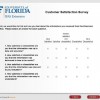 As part of the Savvy Survey Series, this publication provides Extension faculty with an overview of the process that uses email to invite participants to complete an on-line survey. This 10-page fact sheet provides guidance for constructing an online questionnaire, addressing visual design and formatting considerations, and implementing an online survey. Written by Glenn D. Israel and Jessica L. Gouldthorpe, and published by the UF Department of Agricultural Education and Communication, August 2013.
As part of the Savvy Survey Series, this publication provides Extension faculty with an overview of the process that uses email to invite participants to complete an on-line survey. This 10-page fact sheet provides guidance for constructing an online questionnaire, addressing visual design and formatting considerations, and implementing an online survey. Written by Glenn D. Israel and Jessica L. Gouldthorpe, and published by the UF Department of Agricultural Education and Communication, August 2013.
http://edis.ifas.ufl.edu/pd077
Swirski mite (suggested common name) Amblyseius swirskii Athias-Henriot (Arachnida: Mesostigmata: Phytoseiidae)
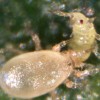 Amblyseius is a beneficial predatory mite endemic to the Eastern Mediterranean region. This species is considered a generalist predator, and readily consumes small soft-bodied pest species as well as pollen or plant exudates. Amblyseius swirskii has attracted substantial interest as a biological control agent of mites, thrips and whiteflies in greenhouse and nursery crops and is currently reared and sold commercially in Europe and North America for this purpose. This 5-page fact sheet was written by Mahmut Dogramaci, Garima Kakkar, Vivek Kumar, Jianjun Chen, and Steven Arthurs, and published by the UF Department of Entomology and Nematology, June 2013.
Amblyseius is a beneficial predatory mite endemic to the Eastern Mediterranean region. This species is considered a generalist predator, and readily consumes small soft-bodied pest species as well as pollen or plant exudates. Amblyseius swirskii has attracted substantial interest as a biological control agent of mites, thrips and whiteflies in greenhouse and nursery crops and is currently reared and sold commercially in Europe and North America for this purpose. This 5-page fact sheet was written by Mahmut Dogramaci, Garima Kakkar, Vivek Kumar, Jianjun Chen, and Steven Arthurs, and published by the UF Department of Entomology and Nematology, June 2013.
http://edis.ifas.ufl.edu/in1001
The Savvy Survey #1: Introduction
 This initial publication in the Savvy Survey Series provides Extension faculty who are interested in creating savvy surveys with a brief introduction to survey design and basic considerations to make when choosing to use a survey for program planning and evaluation. The publication also provides an introduction to and overview of the Savvy Survey Series in Appendix A. This 5-page fact sheet was written by Jessica L. Gouldthorpe and Glenn D. Israel, and published by the UF Department of Agricultural Education and Communication, August 2013.
This initial publication in the Savvy Survey Series provides Extension faculty who are interested in creating savvy surveys with a brief introduction to survey design and basic considerations to make when choosing to use a survey for program planning and evaluation. The publication also provides an introduction to and overview of the Savvy Survey Series in Appendix A. This 5-page fact sheet was written by Jessica L. Gouldthorpe and Glenn D. Israel, and published by the UF Department of Agricultural Education and Communication, August 2013.
http://edis.ifas.ufl.edu/pd061
Calcium (Ca) and Sulfur (S) for Citrus Trees
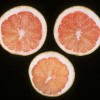 Calcium and sulfur are sometimes called secondary nutrients. This term does not mean that these nutrients play a secondary role in citrus plant growth and development. Ca and S are as essential as N, P, K, Mg, and other nutrients for healthy plant growth. An inadequate supply of Ca and/or S can be a major constraint to crop production and quality. This 5-page fact sheet was written by Mongi Zekri and Tom Obreza, and published by the UF Department of Soil and Water Science, July 2013.
Calcium and sulfur are sometimes called secondary nutrients. This term does not mean that these nutrients play a secondary role in citrus plant growth and development. Ca and S are as essential as N, P, K, Mg, and other nutrients for healthy plant growth. An inadequate supply of Ca and/or S can be a major constraint to crop production and quality. This 5-page fact sheet was written by Mongi Zekri and Tom Obreza, and published by the UF Department of Soil and Water Science, July 2013.
http://edis.ifas.ufl.edu/ss584
Potassium (K) for Citrus Trees
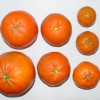 Citrus fruits remove large amounts of K compared to other nutrients. Potassium moves from leaves to fruit and seeds as they develop. Potassium is necessary for several basic physiological functions such as the formation of sugars and starch, synthesis of proteins, normal cell division and growth, and neutralization of organic acids. Potassium is important in fruit formation and enhances fruit size, flavor, and color. This nutrient also helps to reduce the influence that adverse weather conditions (such as drought, cold, and flooding) have on citrus trees. This 4-page fact sheet was written by Mongi Zekri and Tom Obreza, and published by the UF Department of Soil and Water Science, July 2013.
Citrus fruits remove large amounts of K compared to other nutrients. Potassium moves from leaves to fruit and seeds as they develop. Potassium is necessary for several basic physiological functions such as the formation of sugars and starch, synthesis of proteins, normal cell division and growth, and neutralization of organic acids. Potassium is important in fruit formation and enhances fruit size, flavor, and color. This nutrient also helps to reduce the influence that adverse weather conditions (such as drought, cold, and flooding) have on citrus trees. This 4-page fact sheet was written by Mongi Zekri and Tom Obreza, and published by the UF Department of Soil and Water Science, July 2013.
http://edis.ifas.ufl.edu/ss583
How To Buy Pest Control Services
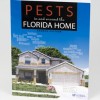 Pest control, like any kind of business, is a joint venture between the company and the customer. As with many businesses, customers may have difficulty judging whether they have received the most skilled efforts for their money. This 4-page fact sheet should help customers objectively look at the service they are buying to determine its merit. Written by P. G. Koehler, and published by the UF Department of Entomology and Nematology, July 2013. This fact sheet updates a chapter of SP134: Pests in and around the Florida Home, which is available from the IFAS Extension Bookstore.
Pest control, like any kind of business, is a joint venture between the company and the customer. As with many businesses, customers may have difficulty judging whether they have received the most skilled efforts for their money. This 4-page fact sheet should help customers objectively look at the service they are buying to determine its merit. Written by P. G. Koehler, and published by the UF Department of Entomology and Nematology, July 2013. This fact sheet updates a chapter of SP134: Pests in and around the Florida Home, which is available from the IFAS Extension Bookstore.
http://edis.ifas.ufl.edu/mg237
Protected Culture for Vegetable and Small Fruit Crops: Types of Structures
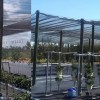 A protective structure is defined as any structure designed to modify the environment in which plants are grown. Protective structures, such as greenhouses, screen houses, and tunnels, are known worldwide as production systems for high-quality vegetable and fruit crops. This 4-page fact sheet was written by Bielinski M. Santos, Gary Vallad, and Emmanuel A. Torres-Quezada, and published by the UF Department of Horticultural Sciences, July 2013.
A protective structure is defined as any structure designed to modify the environment in which plants are grown. Protective structures, such as greenhouses, screen houses, and tunnels, are known worldwide as production systems for high-quality vegetable and fruit crops. This 4-page fact sheet was written by Bielinski M. Santos, Gary Vallad, and Emmanuel A. Torres-Quezada, and published by the UF Department of Horticultural Sciences, July 2013.
http://edis.ifas.ufl.edu/hs1224